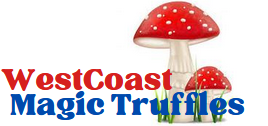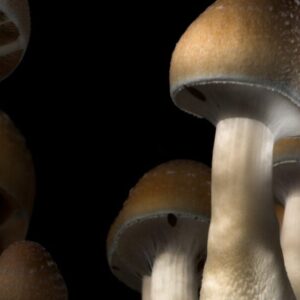Description
Buy Psilocybe cyanescens Online
Buy Psilocybe cyanescens online. Psilocybe cyanescens, sometimes known as wavy caps or the strong Psilocybe, is a potent hallucinogenic mushroom species. Psilocybin and psilocin are primarily responsible for the mushroom’s psychedelic effects. It belongs to the Hymenogastraceae family. In 1946, Elsie Wakefield published in the Transactions of the British Mycological Society a formal description of the species based on a specimen she had just obtained at Kew Gardens. Buy Psilocybe cyanescens online.
She first began collecting the species in 1910. The mushroom is typically not considered physically hazardous to people. Since all psychoactive components in P. cyanescens are water-soluble, the fruiting bodies may be turned non-psychoactive by parboiling, enabling them to be consumed in food. Buy Psilocybe cyanescens online.
However, this is seldom done since most people find them extremely bitter and they are too little to have a significant nutritional value. In England, a single Psilocybe cyanescens patch had almost 100,000 mushrooms.
Appearance of Psilocybe cyanescens Mushroom online
Psilocybe cyanescens has a pileus (cap) that is caramel to chestnut brown while wet and fades to pale buff to slightly yellow when dry. Caps are typically 1.5–5 cm (12 to 2 inches) in diameter and distinctively undulating during maturity. Outside of the P. cyanescens species complex, pileus color is seldom seen in other mushroom species.
Most sections of the mushroom, including the cap and Lamellae (gills, below the cap), may tint blue when handled or otherwise disturbed, likely owing to psilocin oxidation. The lamellae are adnate and mature from light brown to dark purple brown with paler gill margins. There is no discernible annulus, however juvenile P. cyanescens specimens have a cobwebby veil that, upon maturation, may leave an annular zone. Both the aroma and flavor are grainy.
The spores of P. cyanescens are oval and measure 9–12 x 5–8 m. According to some writers, the holotype collection of the species from Kew Gardens lacked pleurocystidia, but North American samples are distinguished by the presence of clavate-mucronate pleurocystidia.
Nonetheless, pleurocystidia may be seen in the holotype collection (but not easily to observe since hymenium is collapsed). In European P. cyanescens specimens, pleurocystidia are frequent and their form is similar to that seen in American specimens. In 2012, a Hamburg, Germany epitype was defined.
Fresh sporocarps and mycelia of P. cyanescens often bruise bluish or bluish-green when disturbed, and the coloring persists after drying. This discoloration is most obvious on the stem (which is white when undisturbed), but it may also appear on the gills, cap, and mycelium.
This discoloration is mostly caused by the oxidation of psilocin. (Psilocybin cannot be oxidized directly, but it is rapidly changed to psilocin by enzymatic activity at injury sites, which can subsequently be oxidized; hence, even specimens with minimal psilocin are often blue.)
Cultivation of Psilocybe cyanescens Mushroom
Temperatures between 10 and 18 °C (50 and 65 °F) initiate fruiting by simulating an autumn habitat. As with many other psilocybin-containing mushrooms, Psilocybe cyanescens is sometimes grown. Due to the species’ fruiting needs, it is difficult but not impossible to grow P. cyanescens to bear fruit indoors.
In a suitable environment, outdoor growing is pretty straightforward. In comparison to other psilocybin-containing mushrooms for both indoor and outdoor culture, the yield per pound of substrate is low. The combination of low yield and difficulties may explain why P. cyanescens is cultivated less often than other psilocybin-containing mushrooms.
Mycelium of Psilocybe cyanescens is more simpler to cultivate than the fruits themselves, can be cultivated inside, and is sturdy enough to be transferred to establish new patches. Mycelium may also be propagated by transplanting stem butts. Psilocybe cyanescens may be grown using many of the same ways as other members of the genus Psilocybe. The concentration of psilocin and psilocybin in cultivated P. cyanescens is comparable to that of its wild counterparts.
Psilocybe cyanescens Identification
Cap
20-50mm in diameter, rounded and closed around the stem early in fruiting, expanding to widely convex with a pronounced central umbo (bump) that continues as the cap widens out, becoming almost planar with wavy borders in maturity. This characteristic is how P. cyanescens are often recognized and distinguished. Pileus vary in color from chestnut-brown to caramel while new, fading to yellowish-brown to ochraceous when dried.
Gills
On the underside of the cap are somewhat dense, loosely connected or notched leaves. Beginning as a light tan, they acquire black spots and mature to a cinnamon-smoky brown, frequently with paler margins. Lamella appears as lines or striations on the cap’s exterior when it is new.
Stipe
Ranges from 20 to 80 mm in length and 2 to 5 mm in thickness, is often somewhat curved, and is thicker towards the base. A whitish substance that soon becomes blue when touched. The surface is smooth and often surrounded by white mycelial tufts (rhizomorphs). When deposited, spores are dark purple to brown and have the form of an elongated ellipsoid. Size ranging from 9-12 × 5-5 micrometers on the microscopic scale.
What is the purpose of Psilocybe cyanescens?
Psilocybe cyanescens. Psilocybe cyanescens, sometimes known as wavy caps or the strong Psilocybe, is a potent hallucinogenic mushroom species. Psilocybin and psilocin are primarily responsible for the mushroom’s psychedelic effects. It belongs to the Hymenogastraceae family. Psilocybe cyanescens
How do you define Psilocybe cyanescens (wavy caps)?
Psilocybe cyanescens, sometimes known as wavy caps or the strong Psilocybe, is a potent hallucinogenic mushroom species. Psilocybin and psilocin are primarily responsible for the mushroom’s psychedelic effects. It belongs to the Hymenogastraceae family. Psilocybe cyanescens.
What is the difference between cyanescens and Psilocybe cyanescens?
“Cyanescens” is the species epithet for both Psilocybe cyanescens and Panaeolus cyanescens, the wavy-cap and The Blue Meanie, respectively. Both will turn blue when damaged. Both are psychotropic, yet their species are vastly distinct. Psilocybe cyanescens.
What does the blue coloration of a Psilocybe indicate?
Psilocybe cyanescens, like other members of the genus Psilocybe, has a hygrophanous character, meaning that its color varies according on its hydration level. As a result of psilocin oxidation, they develop a cyan-blue tint when handled or bruised.



Reviews
There are no reviews yet.